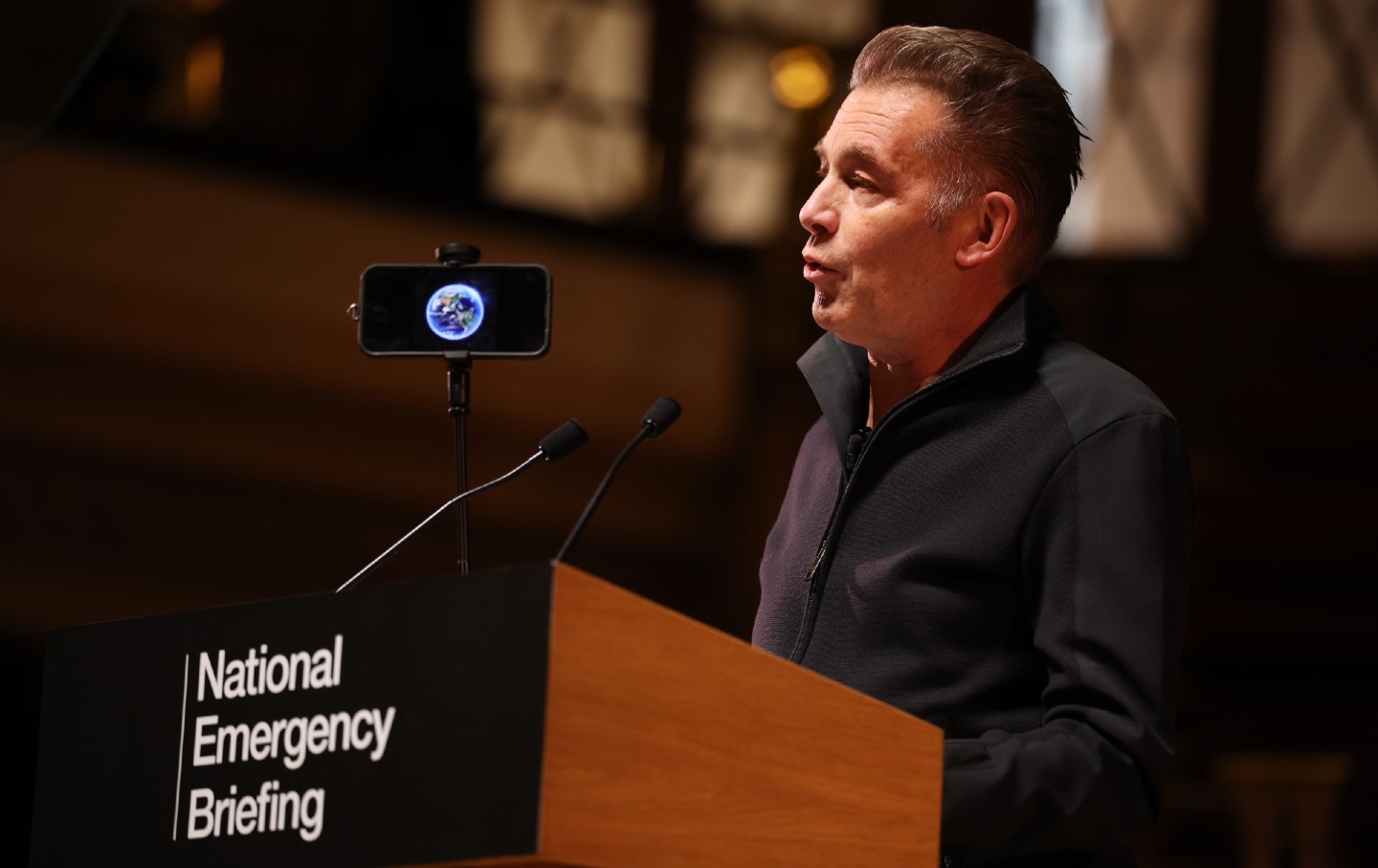Eroding Indigenous Sovereignty
How climate change complicates the fight for Tribal Nations to prove who they are.
Eroding Indigenous Sovereignty
Tribes seeking federal recognition so they can better address climate change face a catch-22 as climate change jeopardizes the documents they need for recognition.
As a record-breaking hurricane headed toward the United Houma Nation’s ancestral and current homeland, Melanie Liner was in the eye of an existential crisis. It was August 2021, on the 16th anniversary of Hurricane Katrina, when a Category 3 storm named Ida was suddenly upgraded to Category 4, catching many by surprise. Fueled by warming ocean temperatures, the storm had rapidly intensified in the Gulf of Mexico and stalled for hours in southern Louisiana. Those who could afford it rushed to board their homes, pack their bags and drive out of town, often bringing along irreplaceable belongings and essential records: birth certificates, insurance papers, Social Security cards, and family photos.
Liner, one of the two archivists of the United Houma Nation, couldn’t afford to leave either—she only had a few hours to figure out how to protect one of the most irreplaceable things the Houma Nation had: their tribal archive.
At 30 years old and with a degree in history from Nicholls State University, Liner was hired as a tribal archivist in 2020. When she saw the opening for what she describes as her “dream job,” she couldn’t believe her luck. “It was just fate,” she says.
Liner had always been passionate about her tribe’s past, but she hadn’t anticipated that her work as an archivist would also be key to the Houmas’ future. That stormy August, she rushed over to the Old Settlement School, a frail wooden building that had served as the only school for Native children in Lafourche Parish during segregation. Liner’s own grandmother had studied there. The old school was a symbol of the nation’s fight for education and its centuries-long resistance to colonial forces and institutional racism. The building had since become their enrollment office and a makeshift archival library, housing historical and genealogy records as well as legal documents and artifacts.
The roof needed to be replaced, and Liner “was scared it would rain in some place,” she says. So she rushed to wrap computers, documents, and artifacts like traditional baskets and wood carvings in large garbage bags. “I definitely improvised,” she says.
But Liner was mainly worried about Houma’s enrollment records: the files mapping each tribal citizen’s ancestry and relation to the tribe. These records were stored in fireproof filing cabinets. She did her best to cover them with layers of heavy tarps, hoping that would be enough to keep the water out.
As she stepped out of her office to shelter in place at home, Liner wondered whether the building would stand a chance against the storm and their tribal records would survive. “I was tremendously concerned,” she says.
Burdened by Bureaucracy
Liner didn’t have the resources to protect her tribe’s archive ahead of time, in part, because the federal government does not recognize the United Houma Nation as a sovereign nation. The United Houma Nation is one of about 400 Native tribes in the United States that do not have this status. Federally recognized tribes have sovereignty over their land and engage with the US in a government-to-government relationship. With this acknowledgment, tribal nations can access federal funds, run their own health care and housing programs and, when a climate disaster like Hurricane Ida hits, declare a state of emergency and access post-disaster assistance from the Federal Emergency Management Agency.
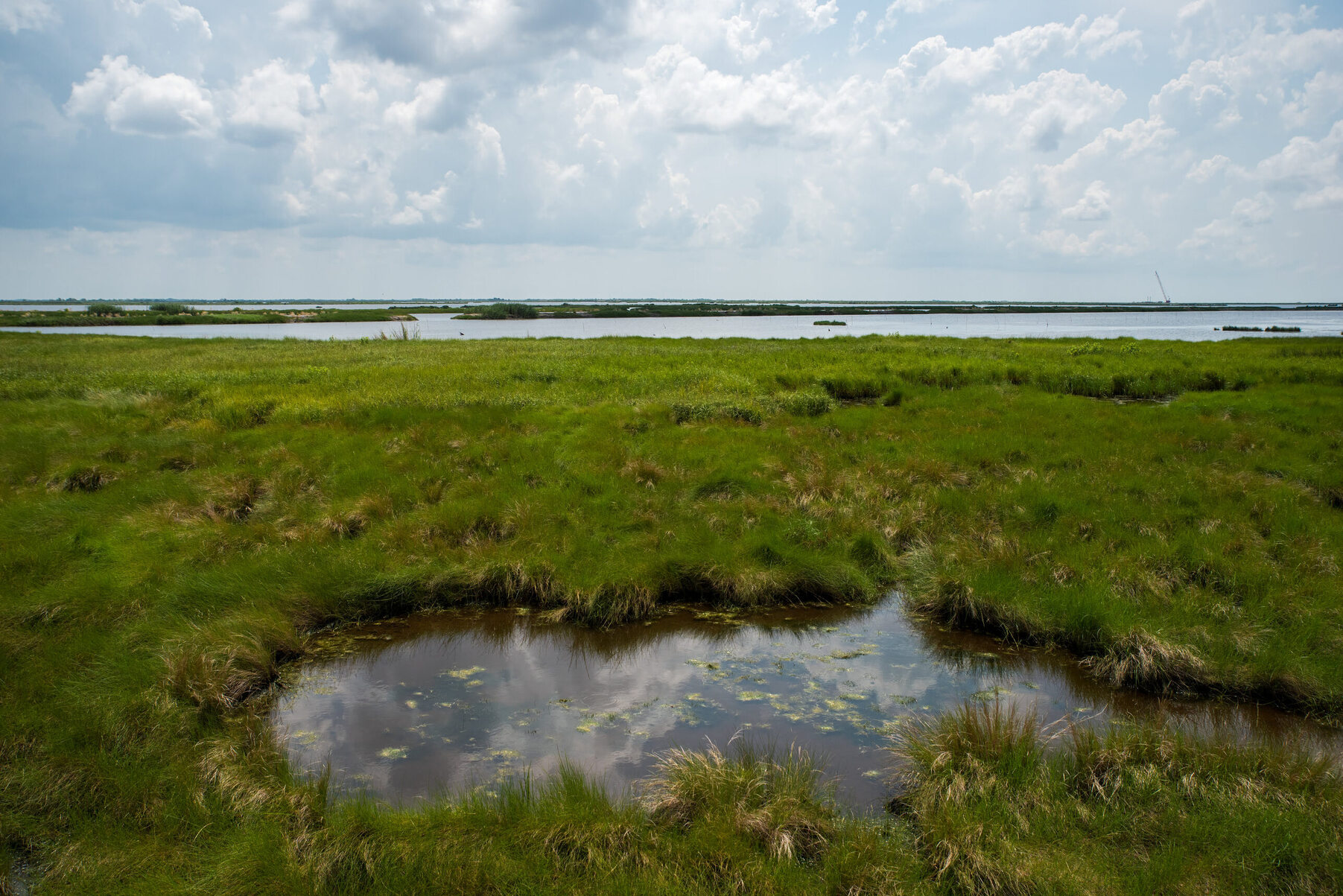
Federally recognized tribes also get access to more funding to build their own centers, archives, and museums to protect their legacy. Historical records are considered essential evidence to obtain federal acknowledgment—a status that many believe is essential for tribal nations’ long-term survival, particularly as climate change threatens both Indigenous people and their preservation efforts. Without the resources that come with the federal acknowledgment, many tribes are trapped in a catch-22: The federal funding that would help maintain their archives hinges on a preservation effort many unrecognized tribes need federal resources to carry through.
Federal recognition can be obtained through acts of Congress, court decisions, or a seven-pronged petition process, which involves a byzantine bureaucratic procedure that has been criticized by scholars and Indigenous rights activists as representing yet another colonial tool to deprive tribes of key resources. The process—which has been called broken by several members of the US Senate Committee on Indian Affairs—requires tribes to present thousands of centuries-old written records proving their Indigenous identity and connection to the land—a challenging endeavor for tribes who have historically only relied on oral history. “The evidence component is just impossible to fulfill,” says Maria Montenegro, assistant professor of Indigenous and Native American studies at the University of California–Irvine, who’s worked with several tribal nations to file their petition for federal recognition.
The United Houma Nation has been trying to establish itself through the Bureau of Indian Affairs since 1979. Even when tribes manage to present their records, they often have to wait decades for a decision, like the Houma, who are still fighting for federal acknowledgment after a 1994 preliminary finding established that the tribe did not meet three of the seven criteria to be acknowledged federally.
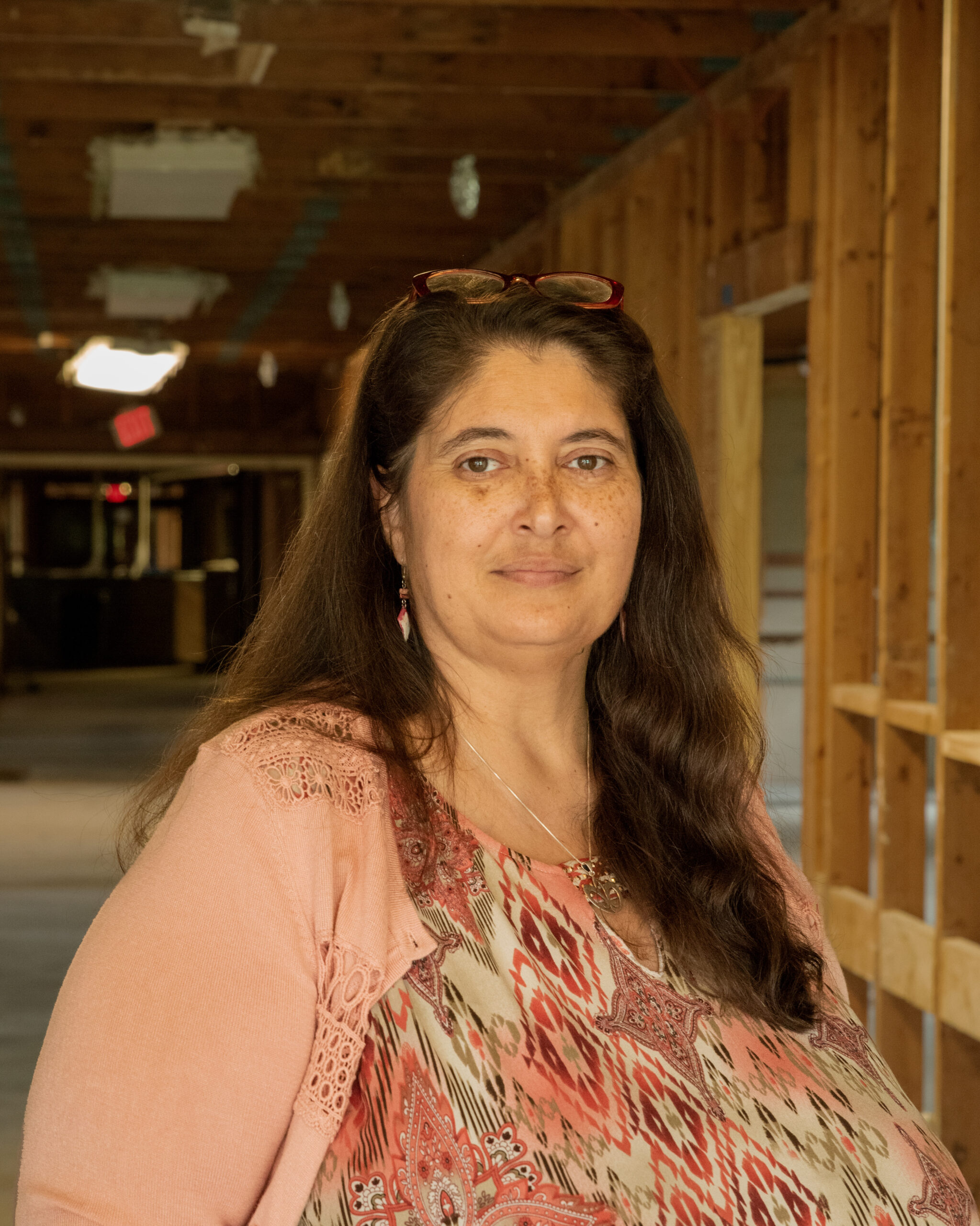
“The unfortunate thing is for us, we have to prove who we are,” says Lanor Curole, the United Houma Nation’s tribal administrator.
And as tribes like Curole’s slog through the process, climate change is an active threat to tribal record preservation.
Houma Nation Map
Ida brought unprecedented devastation. Thirteen thousand homes were destroyed in Terrebonne Parish, and 75 percent of buildings were destroyed in Lafourche Parish—two of the worst-affected areas, which are also home to the highest concentration of Houma citizens in southern Louisiana—were damaged or destroyed. Many tribal citizens lost their homes, their cars, and their boats, which for those working in the local shrimp industry meant losing their livelihood.
The United Houma Nation sprang into action, distributing food and water and helping with rescue operations. But among the chaos, water, and debris, Houma citizens like Liner also had to face another emergency: bringing their historical and genealogy records to safety.
On a rainy day, not even a week after the hurricane had ravaged the area, when most houses still had no water and no electricity, Liner and her colleague, fellow tribal archivist, Kathleen Bergeron, were back at their office. At 69, Bergeron, who passed away in 2023, had dedicated much of her life to protecting and preserving tribal records. Together with other volunteers, the two archivists stood beneath the leaky ceiling, fighting the oppressive late summer heat, to try to retrieve thousands of documents and preserve their history.
Like many other buildings in the area, the Old Settlement School had flooded, which put the United Houma Nation in a race against time. Ida’s powerful gusts had blown away shingles, part of the ceiling had collapsed, and water had penetrated the fireproof cabinets that held tribal citizens’ genealogy documents.
Popular
“swipe left below to view more authors”Swipe →For centuries, historical records have been destroyed by the elements. The Houma, for example, lost some important records documenting their connection to their land in a devastating fire in 1887. Several Virginia tribes also struggled to fulfill the requirements to obtain federal acknowledgment, as courthouses held documents that could serve as evidence of their presence on the land burned during the Civil War. Losses like these have been grounds for the federal government to deny tribal nations federal recognition.
Tribal records aren’t any safer today. A 2021 research paper published by Science, a peer-reviewed academic journal from the American Association for the Advancement of Science, found that centuries of land dispossession, forced migration, and removal perpetrated by white European and American settlers, pushed tribal nations to some of the country’s least desirable lands. Most of these areas are also disproportionately exposed to climate change. Forty-two percent of the tribes taken into consideration aren’t federally or state-recognized, and have no access to resources for climate adaptation, nor aid after a climate catastrophe.
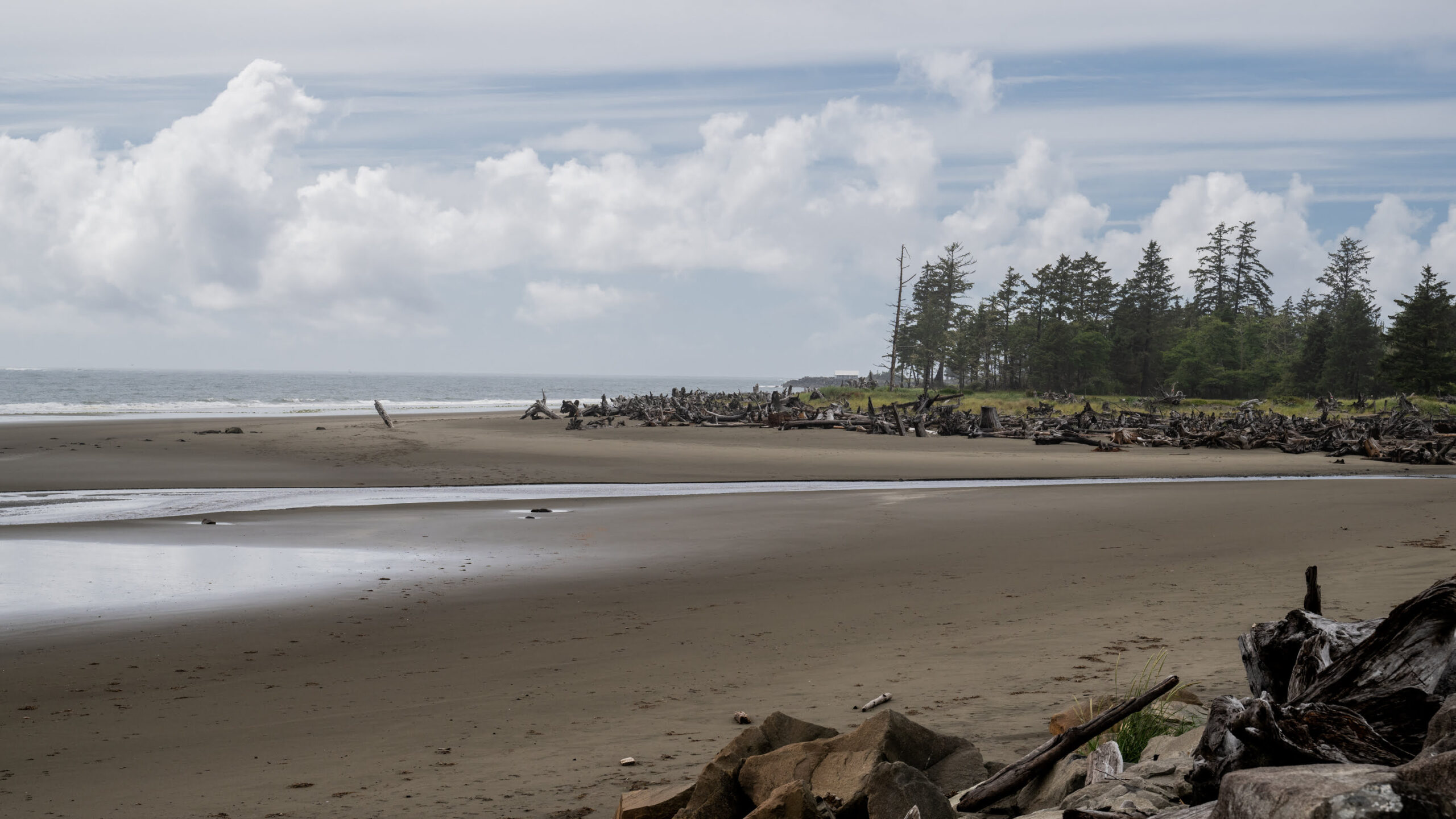
When climate disasters strike, tribal records are also threatened, potentially stymying Indigenous people’s chances to access the federal resources they need to survive. What’s more, these disasters can also displace citizens, shatter communities, and threaten cultural practices that have been passed down for hundreds, and in some cases thousands, of years. Scholars say that, in a vicious circle, this too can create new obstacles to federal recognition.
“If climate change has disrupted ecosystems or relationships between people and ecosystems, it becomes all that much harder to demonstrate that those lines of connection to land and water still exist today,” says Ryan E. Emanuel, a climate scientist at Duke University and a member of the Lumbee tribe of North Carolina.
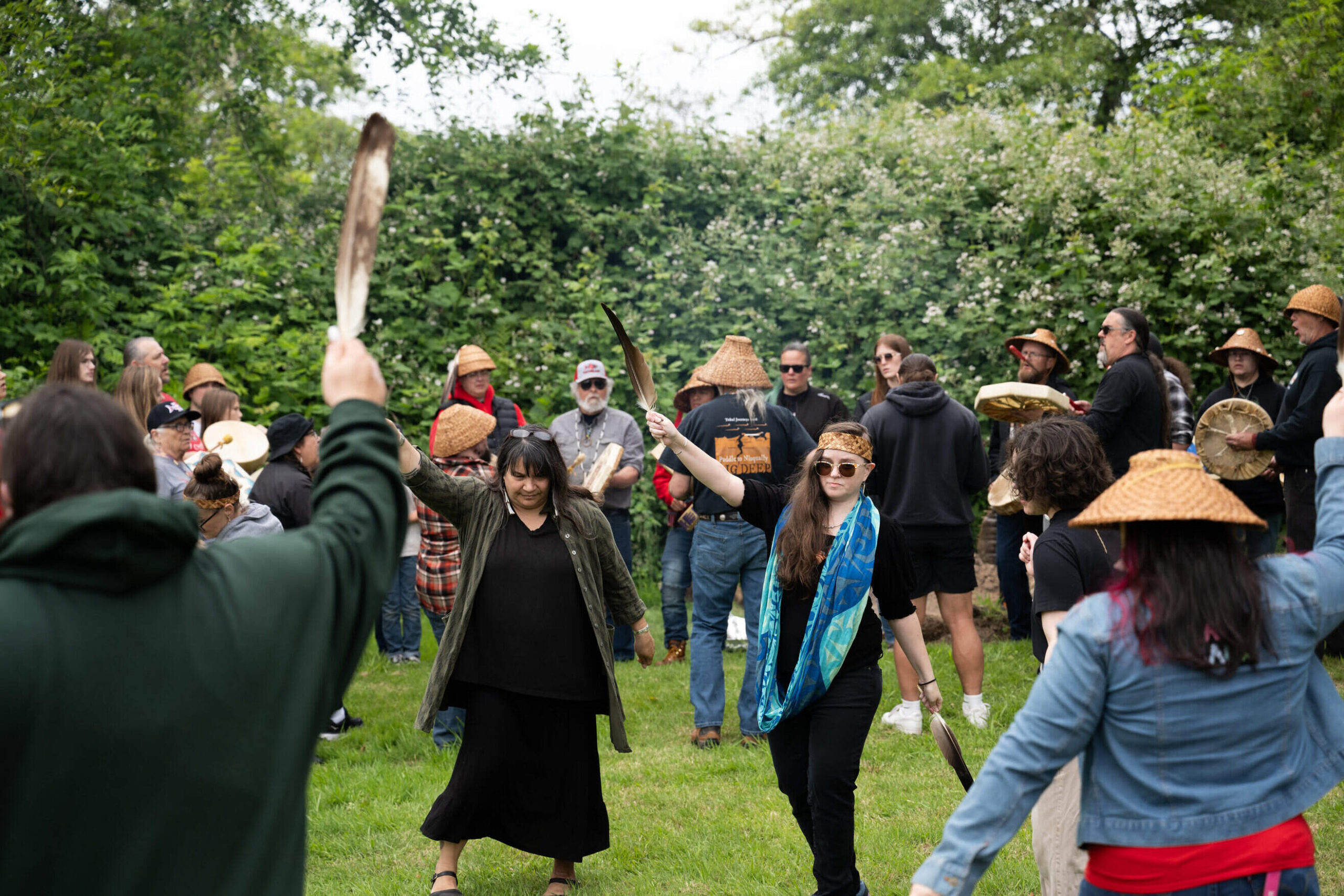
‘This may not be here forever’
On a cloudy Friday morning in mid-June, dozens of members of the Chinook Indian Nation gathered for their yearly First Salmon Ceremony, in Tansy Point, at the mouth of the Columbia River, in Oregon. As part of the celebration, this Indigenous nation that is unrecognized by the federal government honors its fishermen, as well as its connection with the land.
It was here in 1851 at this clearing surrounded by thick vegetation that blocked the view of the river that the tribe’s leaders negotiated a treaty with the US government that was supposed to grant them control over their land. Tony Johnson, the nation’s chairman, says that on that historical day, tribal leaders summoned all their members, including elders and children. “It’s the only place in the world where we know all of our ancestors were at one moment in time,” he says.
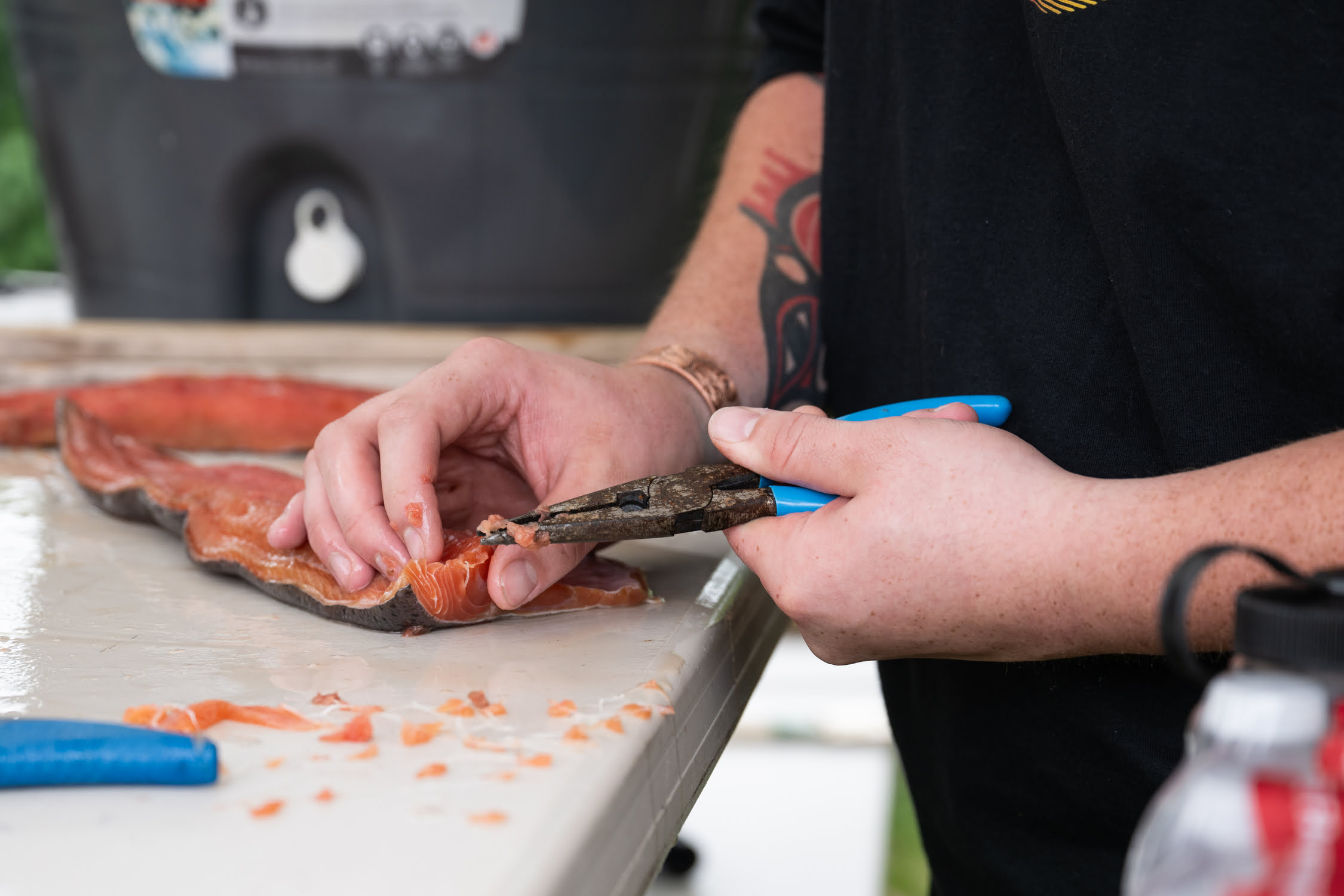
Tribal citizens brought their children to the salmon ceremony, allowing them to skip their last day of school. The ceremony was also an opportunity for many to reconnect, as they gathered in front of a fire to roast and celebrate the first salmon of the season. Attendees danced, sang traditional songs, and offered remarks to honor their land, fishermen, and ancestors. Many who’ve moved away returned for the ceremony. Carlee Wilson, a 35-year-old member of the Chinook Nation, flew back from Georgia, where she moved because she could no longer afford the rising cost of life in Seattle. “It’s important for me to be here because this may not be here forever,” she says. “In the realm of climate change, this could disappear.”
Chinook Indian Nation Map
About 40 miles north, on the Coast, the nation’s headquarters, a flimsy wooden house in Bay Center, Willapa Bay, lies on a thin strip of land about, surrounded by the Pacific Ocean. The area, where thousands of the tribe’s records are held in boxes, storage units, and various buildings, is exposed to severe risk of flooding and increased average high tide. It is projected that flood levels may be between three feet, five inches to four feet, one inch by 2050. Blue signs alerting passersby of the tsunami zone dot the land surrounding the nation’s headquarters. The sea-level rise can increase the intensity and frequency of a future tsunami.
Rachel Cushman, secretary and treasurer of the Chinook Indian Nation, says that preserving its historical records from the elements is a never-ending worry. “It’s something that’s constantly on our mind,” Cushman says.
Cushman is a descendant of Chief Wasilta, a tribal leader who negotiated and signed the 1851 Tansy Point treaties with the US government.
The treaties should have ensured the nation’s federal acknowledgment, granting them sovereignty over some of their ancestral lands, but, as it happened with many other Indigenous nations, Congress never ratified the treaty, leaving the Chinook Nation without legal status. What followed was a centuries-long fight for recognition.
In 1979, the Chinook filed an official petition for recognition with the Office of Federal Acknowledgment. The nation presented over 81,000 documents to prove their case.
In January 2001, the Clinton administration, in its final weeks in office, finally approved the Chinooks’ petition for federal recognition. But the status didn’t last long. The nearby federally recognized Quinault Indian Nation, who feared losing control over some of their land and resources, and had opposed the Chinook’s quest for recognition, filed an appeal with the Department of Interior’s Board of Indian Appeals.
Eighteen months later, the Bush administration reversed the decision, stripping the Chinook’s recognition away and changing the trajectory of the nation and of Cushman’s life.
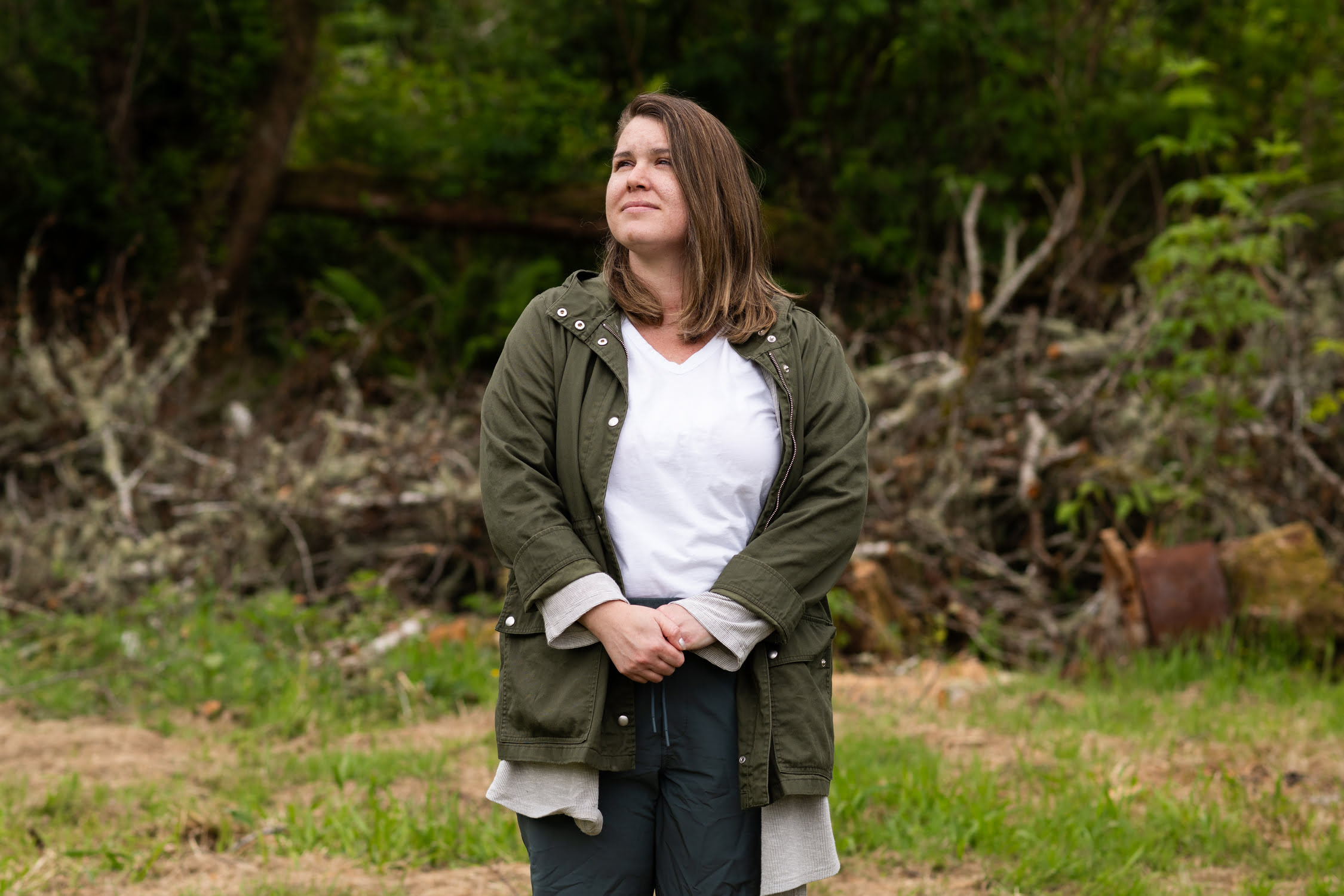
Federally recognized tribal nations have often opposed the acknowledgment of other tribes. “Colonialism has created this perception and probably reality that federal resources are finite for tribal nations,” Emanuel explains. Emanuel’s tribal nation, the Lumbee, has also been seeking federal recognition for decades. In 1956, Congress acknowledged it as a tribal nation but denied it the sovereignty and benefits. “I would imagine that some tribes are very protective of those resources and don’t want to have to divide those subpar resources even further,” he says.
When the Chinook were stripped of their acknowledgment status, Cushman was 15 years old and wanted to become a fisheries biologist when she grew up. She had just gotten a summer job as an apprentice at the Bureau of Indian Affairs in the Columbia River Inter-Tribal Fish Commission.
One early morning in July 2002, as she was getting ready for work, she heard a gasp from the kitchen, where her mother was reading the paper. “What’s going on?” Cushman asked. Her mother had just read they were losing their hard-won status. She took her coffee cup and shattered it in the sink. The coffee went everywhere.
“I just felt broken,” Cushman remembers. “My mom, you know, she and I hugged in the middle of the kitchen, coffee everywhere, we didn’t care.”
That morning at work, Cushman put on a pair of heavy 1990s headphones and tried to avoid talking to anyone. A colleague approached her: “I heard what happened,” he said. “I’m sorry you’re not an Indian anymore.”
The news of losing recognition was so devastating to some, that they decided to cut their hair in a sign of mourning and protect the most vulnerable from it. “There was an elder who was in an elderly care facility who was just so happy when they found out that they got acknowledged that we never told them before they died,” Cushman says. “We just let them go on and on believing that they were whole because that’s really what it is.”
Cushman has dedicated her life to holding the US government accountable for what her ancestors had been promised. She is well aware that being stripped of their federal status didn’t necessarily mean being stripped of their identity, but she knows that being federally recognized will make a major difference for her tribal nation. “It doesn’t mean that they tell me that I’m Indian, I’m still an Indian, but my tribe is not protected,” she says. “And that’s what federal recognition is about: protecting our future.”

A glimpse of what life under federal recognition could look like is offered by the Chinook’s neighbors, the Shoalwater Bay Indian tribe, a federally recognized Indigenous nation based in Tokeland, about 40 miles north of Bay Center.
The tribe recently received a $25 million federal grant to relocate their reservation away from the coast, in the hills, out of harm’s way. “I’ve lived here all my life. Tokeland is all I know,” says Quintin Swanson, chairman of the Shoalwater Bay Indian tribe. “It is disheartening that we’re going to essentially lose our homeland, that we’ve become so accustomed to. But I’m also looking forward to a brighter future for our kids.”
In 2022, the tribe also built a tsunami vertical evacuation tower, which can provide refuge for over 400 people.
“Had we not been federally recognized, it’s very unlikely that those funds would have come to us,” says Risa Thomas, community development coordinator of the Shoalwater Bay Indian tribe.
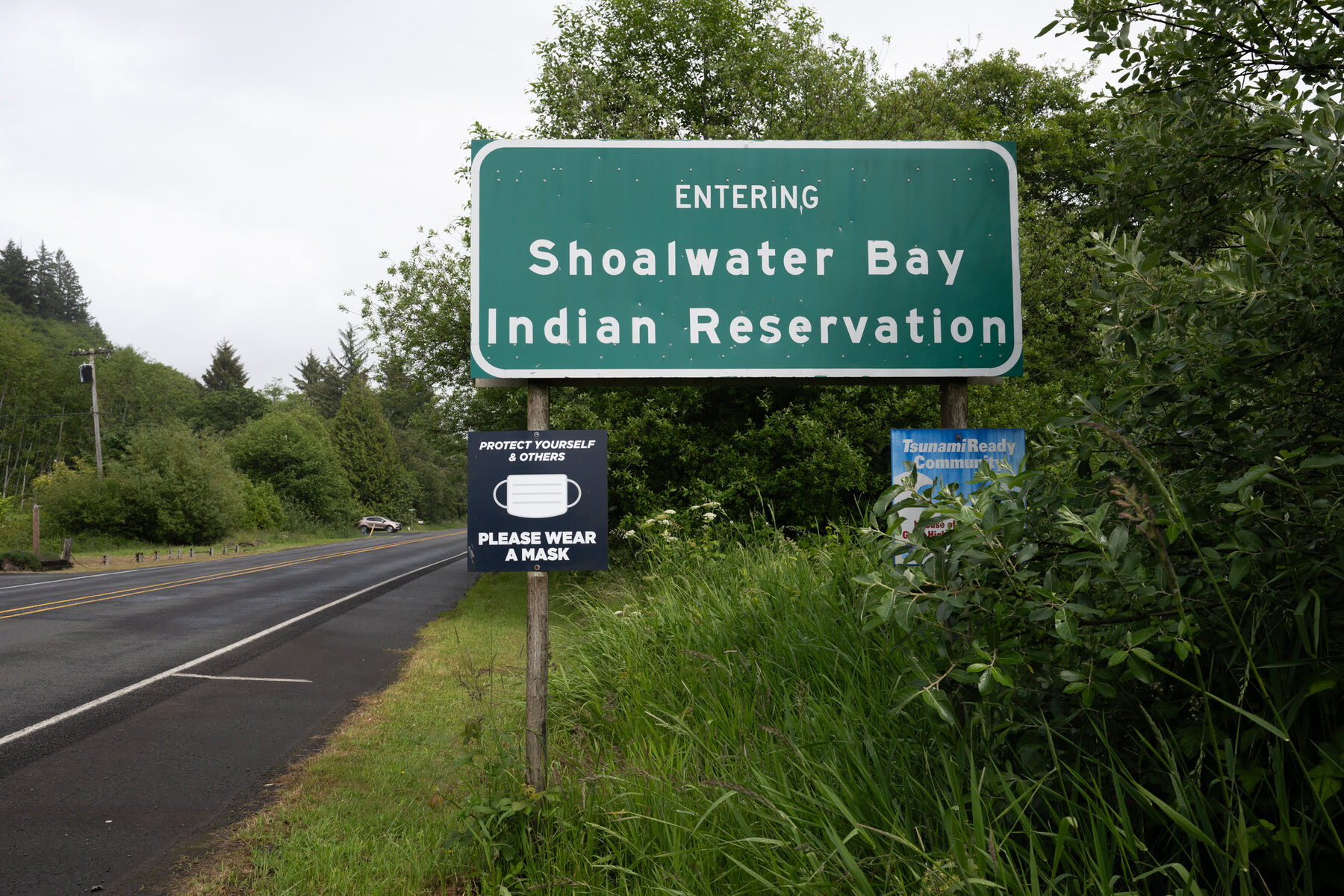
Digitization and Distrust
The Chinook have been working to protect their historical records for decades. Tony Johnson, the nation’s chairman, said the nation had begun storing some of its key documents in a safe deposit box inland, far from the coast before his father became part of the Tribal Council in 1971. The box’s location changed over the years, home to a physical copy of the nation’s enrollment files and its current Constitution. “Just like the basic bare bones, necessary items to reconstitute ourselves or like to be able to continue functioning in the event [of a disaster],” Johnson says.
Recently, the nation purchased a safe deposit box at a bank in Pe Ell, on the other side of the Willapa Hills “at an elevation that will not be affected by the tsunami,” Johnson said. Here is where the nation keeps the original so-called “Blue Files,” which document every ancestor between the 1790s (the first contact with European settlers) and the 1850s. The Blue Files are key for enrollment, as every new citizen must provide evidence that they’re connected to those ancestors.
While this is a step in the right direction, Johnson knows that the indefinite number of boxes of historical paper records scattered across different locations, including his home, can’t be a permanent solution. “It’s not ideal,” he says, but he also feels that they’re safer with him, as his house sits at about a 90-foot elevation—the headquarters out on the bay is at about 40, by Johnson’s estimations.
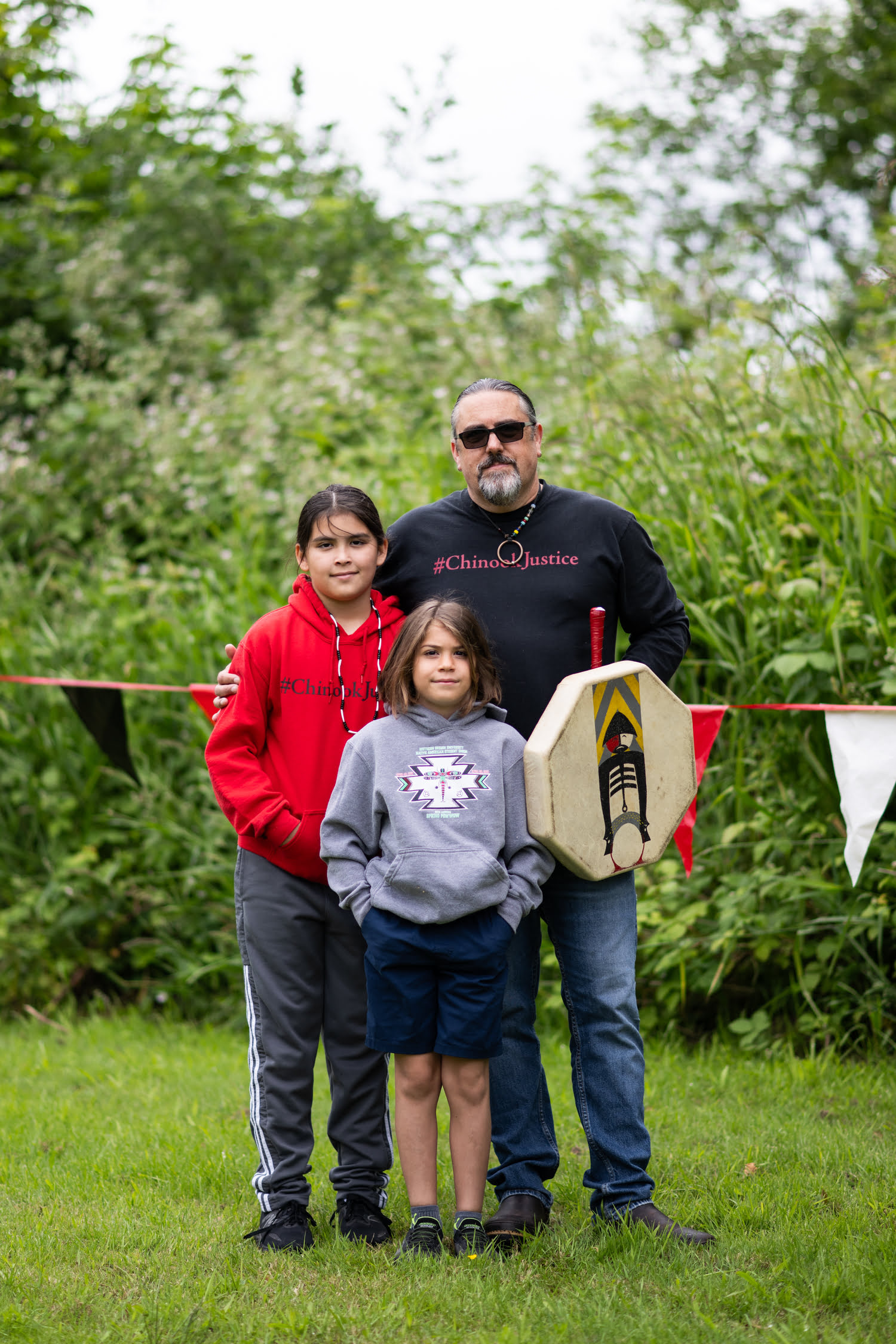
The Chinook have begun to digitize some of their key documents, such as their citizens’ family trees, but most of their historical records, including the Blue files and their citizens’ birth certificates have not been digitized yet. “Every one of these enrollment files should be digitized,” Johnson says, but he acknowledges that “this is a pretty massive project.”
Cushman says that scanning all their records could cost them about $10,000, but the amount would go up if they were to hire an archivist, as they would like to attain a searchable archive.
With no federal funding, the process could take years.
“Digitization efforts are expensive, they are time-consuming,” says Maria Montenegro, a professor at the University of California–Irvine. “They need specific equipment.” Tribal nations, ones federally recognized and not, often partner up with universities and other institutions to build their digital archives. But Montenegro points out that since academia and other cultural institutions have spent decades extracting knowledge, data, artifacts, and even stealing ancestral remains, these relationships can be problematic.
The Amah Mutsun Tribal Band, a northern California tribe that is not federally recognized, has been partnering up with the University of California at Santa Cruz to develop climate adaptation projects. Despite the collaboration, the tribe remains wary of sharing some key information.
Valentin Lopez, chief of the Amah Mutsun Tribal Band, explains that while some of the tribes’ sacred sites are being threatened by coastal erosion, they decided to keep those locations confidential, after suffering massive looting both at the hands of private citizens and researchers. In 2019, the University of California–Santa Cruz returned 21 boxes of funerary objects to the tribe. “People will go out there with shovels and picks and start seeing what they can find,” Lopez says. “If you look at UC Berkeley now, they still have the remains of 9,000 of our [Indigenous people].”
Montenegro explains that the skepticism toward academic and cultural institutions often also translated into a hesitancy to digitize records.
“Tribes have been colonized, dispossessed, oppressed, suppressed in so many ways,” Montenegro says. “There’s that distrust of the digital that is very evident. The circulation of their knowledge is leaking out and that’s taking power away from them.”
This is why for many tribal citizens being in control of their own archival and digitization efforts is key.
Waylon Coats, vice chair of the Southern Sierra Miwuk Nation, a California tribe Indigenous to Mariposa County and Yosemite, California, took it upon himself to lead the nation’s digitization efforts.
Southern Sierra Miwuk Nation Map
Like the Houma, the Southern Sierra Miwuk Nation has been seeking recognition for over 40 years and Coats says his tribe is rebutting this denial with the federal government. An anthropologist and archaeologist by training, Coats has been working on his tribe’s digitization efforts for years, but accelerated the efforts after the 2022 Oak fire—a devastating wildfire that burned about 20,000 acres west of Yosemite National Park—ravaged the Miwuk community, destroying over 100 of the citizens’ homes and some of their sacred gathering spots.
Coats believes that digitization must be a priority for his tribe. “It’s a way to protect ourselves, no matter how long it takes,” he says. “Another fire,” he says, “It could have devastating effects.”
So Coats set up two groups of volunteers: One is in charge of digitizing the tribe’s historical data and culturally sensitive archeological sites, and the other tribal legal documents and records related to their petition for federal recognition.
“We’re talking about thousands of documents: from our enrollment records to our archeological sites,” says Coats. He acknowledges that copies of the tribe’s key records are with the Office of Federal Acknowledgement at the Bureau of Indian Affairs, which doesn’t provide reassurance for the tribe, he says. “It took them 40 years to send us a preliminary finding. Do you think they’re going to send us the papers that we’re trying to dispute them with?”
Watch, Wait, Hope
In the weeks following Hurricane Ida, Liner went back and forth to the Old Settlement School, saving “any documentation still in good condition” until the post-storm black mold finally took over the building.
The United Houma Nation had managed to find a refrigerated truck that could take its records to a paper conservation lab in Texas for mold-prevention treatment. There was only one problem: The entire archive couldn’t fit in the truck. Liner and Bergeron had a difficult call to make: “We couldn’t save everything. So, we had to be very specific in choosing what documents were most important,” says Liner. “The number-one thing, of course, was enrollment records.”
Water had penetrated the filing cabinets. Some records were damp but, thanks to the tarps that Liner had used to protect them, they were still legible. They spent hours boxing and organizing those records as well as other legal and historical documents and, of course, old photos.
Over 200 boxes were loaded on the truck and sent to Texas.
“Those are the core documents we need moving forward with federal recognition,” says Curole. “It’s the validation of all our lineage.”
What didn’t make it onto the truck, Liner stored at her place, which had been miraculously spared by the storm. “I was tremendously proud to store and save things at my own home,” she says. Among her most precious findings: a collection of video interviews of Houma elders who are no longer alive—a key component of the tribe’s oral history.
Thanks to Liner and Bergeron’s work, the tribe managed to save its enrollment records and much of its archive. But repairing the tribe’s offices, which were all badly damaged by the storm, is still an ongoing effort three years later. Without functioning office space, their archive sits at that lab in Texas, throwing a wrench into digitization efforts. Curole says that, while the tribe managed to digitize many of its enrollment records, not having the source documents is problematic. “Electronic documents are only as good as the data entry that took place,” she says. “So, we’ve got discrepancies and we’re going back to source documents, but we don’t have those right now.”
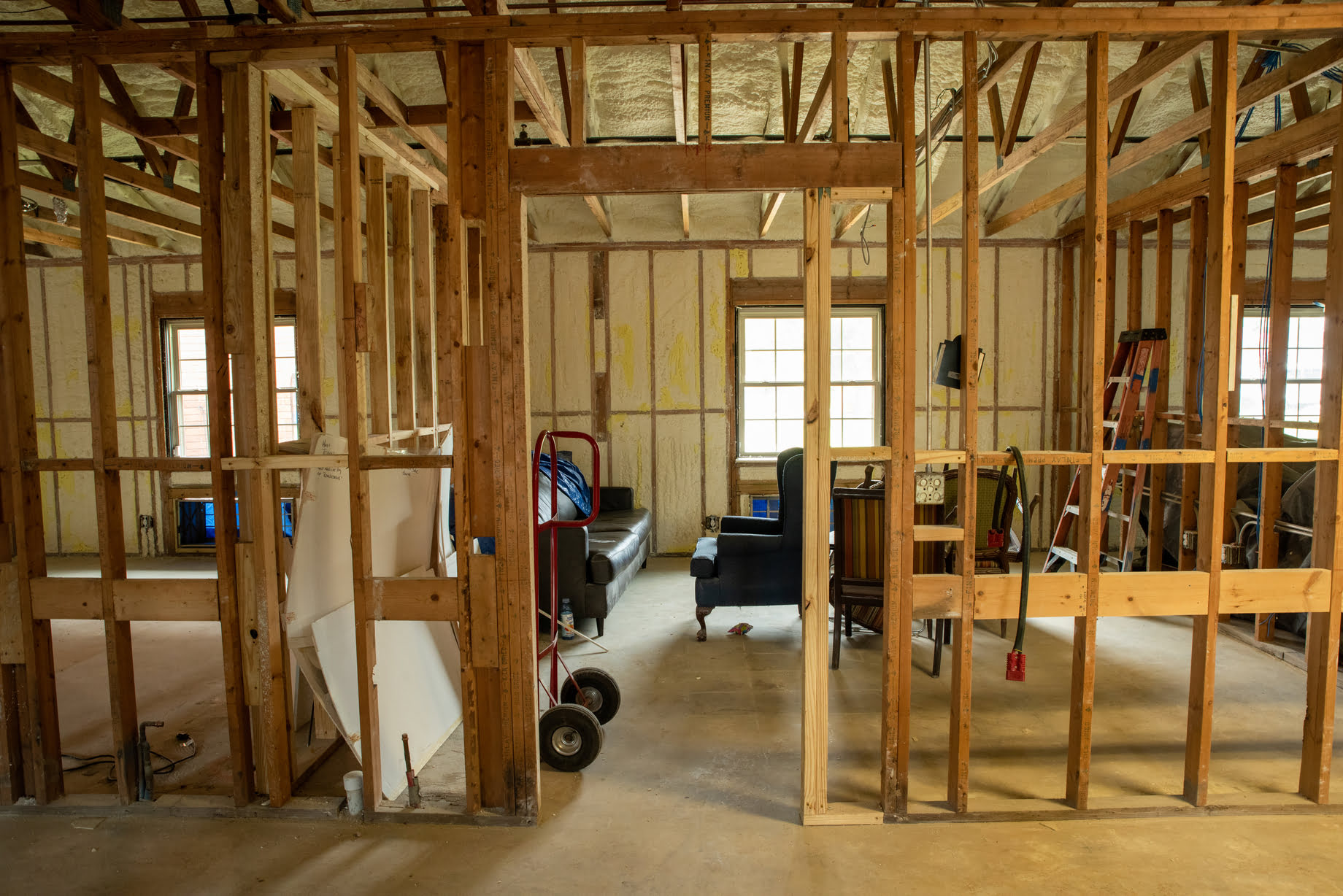
Tribal leaders, activists, and scholars have criticized the burden of historical record-keeping for people reliant on the tradition of oral history as a colonial tool that has been used for centuries to control Indigenous nations, police their identity, and limit their sovereignty.
To remedy this after years of advocacy and criticism, in 2015 the Department of the Interior revised the federal recognition requirements, allowing tribes to prove their existence dating back to 1900 rather than 1789 or since first contact with European settlers. Still, much of the process requires providing centuries-old written documents—something increasingly more unattainable for those tribes at the forefront of the climate crisis.
The Office of Federal Acknowledgement didn’t reply to The Margin’s requests for comment.
In 2020, five tribal nations filed a human rights complaint against the United States. The tribes, four of which are not federally recognized and based in Louisiana near the United Houma Nation, claimed that by depriving them of federal resources, the US government failed to protect them, their self-determination, and their cultural heritage from climate change.
Although the United Houma Nation wasn’t among those who filed the complaint, its citizens are well-versed in bootstrapping recovery and cultural preservation efforts. Liner, who’s been on the front lines of preserving her tribe’s culture that Ida almost washed away, says it was painful to see the Old Settlement School so severely damaged.
But instead of abandoning a key piece of their history, the Houma Nation purchased the building from the Lafourche Parish School Board in March 2024, about two-and-a-half years after the Ida. It was an act of defiance of climate disasters as well as the colonial forces that had been trying to displace and delegitimize their tribe. While the building is still undergoing repair, the plan is to transform it into a tribal center and a museum—a testament to the tribe’s commitment not just to its past but also its future.
As Louisiana is bracing for what meteorologists predict could be an abnormally active Atlantic hurricane season, Liner tries to remain calm. She recently finished renovating her home and birthing her second child, which gave her a reason to plan for a future in the place where her ancestors lived. Her past is intrinsically connected to her future.
“It’s just [the] same old,” she says. “I grew up in this area, like, we just watch and wait.… I’m hoping.”
This story was published in partnership with The Margin. The reporting for this story has been supported by the National Press Foundation and the National Press Club Journalism Institute.
Disobey authoritarians, support The Nation
Over the past year you’ve read Nation writers like Elie Mystal, Kaveh Akbar, John Nichols, Joan Walsh, Bryce Covert, Dave Zirin, Jeet Heer, Michael T. Klare, Katha Pollitt, Amy Littlefield, Gregg Gonsalves, and Sasha Abramsky take on the Trump family’s corruption, set the record straight about Robert F. Kennedy Jr.’s catastrophic Make America Healthy Again movement, survey the fallout and human cost of the DOGE wrecking ball, anticipate the Supreme Court’s dangerous antidemocratic rulings, and amplify successful tactics of resistance on the streets and in Congress.
We publish these stories because when members of our communities are being abducted, household debt is climbing, and AI data centers are causing water and electricity shortages, we have a duty as journalists to do all we can to inform the public.
In 2026, our aim is to do more than ever before—but we need your support to make that happen.
Through December 31, a generous donor will match all donations up to $75,000. That means that your contribution will be doubled, dollar for dollar. If we hit the full match, we’ll be starting 2026 with $150,000 to invest in the stories that impact real people’s lives—the kinds of stories that billionaire-owned, corporate-backed outlets aren’t covering.
With your support, our team will publish major stories that the president and his allies won’t want you to read. We’ll cover the emerging military-tech industrial complex and matters of war, peace, and surveillance, as well as the affordability crisis, hunger, housing, healthcare, the environment, attacks on reproductive rights, and much more. At the same time, we’ll imagine alternatives to Trumpian rule and uplift efforts to create a better world, here and now.
While your gift has twice the impact, I’m asking you to support The Nation with a donation today. You’ll empower the journalists, editors, and fact-checkers best equipped to hold this authoritarian administration to account.
I hope you won’t miss this moment—donate to The Nation today.
Onward,
Katrina vanden Heuvel
Editor and publisher, The Nation


